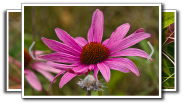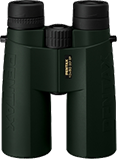yellow water-crowfoot
(Ranunculus flabellaris)
Conservation • Wetland • Description • Habitat • Ecology • Use • Distribution • Taxonomy
Description |
Yellow water-crowfoot is a submerged aquatic, emergent aquatic, or terrestrial flowering plant. It occurs in the United States and southern Canada east of the Great Plains and in the Pacific Northwest. It is found in shallow ponds, slow streams, swamps, wetland margins, and deep ditches. It grows under full sun, usually in shallow, still water up to two feet deep, but it is sometimes stranded on wet, muddy ground. It often forms large colonies. It is usually an indicator of a high-quality wetland habitat. Yellow water-crowfoot has a shallow, fibrous, root system. When growing in water, the stems are weak, submerged, and 12″ to 27½″ (30 to 70 cm) long. When growing out of water they lay flat on the ground and they are shorter. They usually produce roots at the lower nodes. They are hairless when submerged but somewhat hairy when terrestrial. Leaves are ½″ to 2⅞″ (1.2 to 7.3 cm) long, and ¾″ to 4¼″ (1.9 to 10.8 cm) wide. Lower leaves are on long leaf stalks (petioles), while upper leaves are on short petioles or are stalkless. The blades are broadly fan-shaped, kidney-shaped, or semicircular in outline. Submerged blades are 2 to 5 times divided, and the divisions may be into two (dichotomous), three (ternate), or several (pinnately divided) sections. The sections may be thread-like or linear and flattened, and 1⁄128″ to 1⁄16″ (0.2 to 2.0 mm) wide. As leaves approach the water surface, they gradually become less divided and more like emergent and terrestrial leaves, which are mostly ternately compound, ternately divided, or merely three-lobed. These non-submerged blades are deeply heart-shaped at the base. Their segments are diamond-shaped to nearly circular, and they may be undivided or shallowly to deeply 1 or 2 times lobed. The inflorescence is a single flower or a branching stalk with 2 to 12 flowers at the end of the stem. Each flower is held above the water on a stout stalk (pedicel). Each flower is ½″ to 1″ (12 to 25 mm) in diameter. There are 5 outer floral leaves (sepals) and usually 5 petals, sometimes 6, rarely up to 14. There are numerous stamens. At the center of the flower there is a dense cluster of greenish pistils (carpels). The sepals are light green to pale yellow, 3⁄16″ to ¼″ (5 to 7 mm) long, and ⅛″ to ¼″ (3 to 6 mm) wide. They are flat, and they are widely spreading or weakly bent backward. They drop off soon after the flower is fully expanded (anthesis). The petals are yellow, glossy, widely spreading, and noticeably longer than the sepals. They are inversely egg-shaped, ¼″ to ½″ (7 to 12 mm) long, and 3 ⁄16″ to ⅜″ (5 to 9 mm) wide. The stamens form a ring around the base of the cluster of pistils. The stamen stalks (filaments) are yellowish and hairless. The anthers are yellow. Each pistil has a single tiny style. The fruit is a dry seed capsule (achene) replacing each pistil. As the achenes begin to develop, the petals and sepals fall to the ground, leaving an egg-shaped to more or less globe-shaped, 5⁄16″ to ⅜″ (8 to 10 mm) long, ¼″ to 5⁄16″ (7 to 8 mm) wide seed head. Each achene is shaped like a swollen or inflated lentil, 1⁄16″ (1.8 to 2.2 mm) long and 1⁄16″ (1.6 to 2.2 mm) wide. The upper margin is sharply angled, forming a narrow rib. The faces are smooth and hairless. There is a lance-shaped, straight, 1⁄32″ to 1⁄16″ (1.0 to 1.8 mm) long extension (beak) at the end of the achene. |
Height |
Floating, 12″ to 27½″ (30 to 70 cm) long |
Flower Color |
Yellow |
Similar Species |
Habitat |
Shallow ponds, slow streams, swamps, wetland margins, and deep ditches. Full sun. Muddy soil. |
Ecology |
Flowering |
April to June |
Pests and Diseases |
|
Toxicity |
Yellow water-crowfoot, like all buttercups (Ranunculus spp.), contains the toxin ranunculin. When the plant is bruised, crushed, or chewed, ranunculin is converted into the irritating and toxic compound protoanemonin. Contact with the skin can cause burning, itching, redness, and blistering. |
Use |
|
Distribution |
||
|
Sources Biodiversity occurrence data published by: Minnesota Biodiversity Atlas (accessed through the Minnesota Biodiversity Atlas Portal, bellatlas.umn.edu, 6/9/2025). |
|
| 6/9/2025 | ||
Nativity |
||
Native |
||
Occurrence |
||
|
||
Taxonomy |
|
Kingdom |
|
Division |
Tracheophyta (Vascular Plants) |
Subdivision |
Spermatophytina (Seed Plants) |
Class |
|
Order |
Ranunculales (Buttercups, Poppies, and Allies) |
Family |
Ranunculaceae (Buttercup) |
Subfamily |
Ranunculoideae (anemones, buttercups, larkspurs, and allies) |
Tribe |
Ranunculeae |
Genus |
Ranunculus (Buttercups) |
Subgenus |
Auricomus |
Section |
Hecatonia |
Subordinate Taxa |
|
|
|
Synonyms |
|
Ranunculus delphiniifolius Ranunculus delphiniifolius ssp. terrestris Ranunculus delphiniifolius var. terrestris Ranunculus flabellaris Ranunculus lacustris var. terrestris Ranunculus multifidus var. terrestris Ranunculus subalpinus |
|
Common Names |
|
greater yellow water buttercup large yellow water-crowfoot yellow water buttercup yellow water crowfoot yellow water-crowfoot |
|
Glossary
Achene
A dry, one-chambered, single-seeded seed capsule, formed from a single carpel, with the seed attached to the membranous outer layer (wall) only by the seed stalk; the wall, formed entirely from the wall of the superior ovary, does not split open at maturity, but relies on decay or predation to release the contents.
Beak
In plants: A comparatively short and stout, narrow or prolonged tip on a thickened organ, as on some fruits and seeds. In insects: The protruding, tubular mouthpart of a sucking insect.
Carpel
The female reproductive organ of a flower, consisting of an ovary, styles, and stigmas.
Filament
On plants: The thread-like stalk of a stamen which supports the anther. On Lepidoptera: One of a pair of long, thin, fleshy extensions extending from the thorax, and sometimes also from the abdomen, of a caterpillar.
Linear
Long, straight, and narrow, with more or less parallel sides, like a blade of grass.
Pedicel
On plants: the stalk of a single flower in a cluster of flowers. On insects: the second segment of the antennae. On Hymenoptera and Araneae: the narrow stalk connecting the thorax to the abdomen: the preferred term is petiole.
Petiole
On plants: The stalk of a leaf blade or a compound leaf that attaches it to the stem. On ants and wasps: The constricted first one or two segments of the rear part of the body.
Pinnate
Having the leaflets of a compound leaf arranged on opposite sides of a common stalk.
Sepal
An outer floral leaf, usually green but sometimes colored, at the base of a flower.
Ternate
Refers to leaves that are divided into three leaflets or sections.
Visitor Photos |
||
Share your photo of this plant. |
||
This button not working for you? |
||
Luciearl |
||
 |
 |
|
 |
||
Pond The little yellow flowers covered a small pond near the road. |
|
|
MinnesotaSeasons.com Photos |
||
 |
||
Habitat |
|
|
 |
 |
|
Colony |
Colony |
|
 |
 |
|
Plant |
Plant |
|
 |
 |
|
Plant |
Plant |
|
 |
 |
|
Plant |
Plant |
|
 |
 |
|
Plant |
Leaves |
|
 |
 |
|
Flower |
Flower |
|
 |
||
Flower |
|

Slideshows |
|

Visitor Videos |
||
Share your video of this plant. |
||
This button not working for you? |
||
|
Other Videos |
||
Yellow Water Buttercup (Ranunculus flabellaris) | Threatened Thursday |
About
Apr 30, 2020 Join me in this vernal pool to see a rare Pennsylvania plant! |

|
Created: 6/11/2025 Last Updated: © MinnesotaSeasons.com. All rights reserved. |


